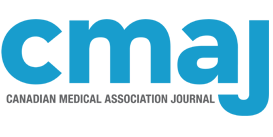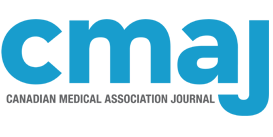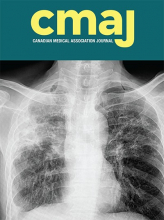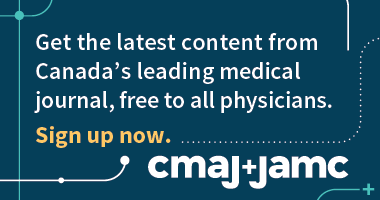Novel regimens for treating tuberculosis offer faster, safer, more effective treatment.
Key drugs underpinning these novel regimens, some of them decades old, are not marketed in Canada.
Tools are available that could improve access in Canada, including recent Canadian regulatory changes and existing international mechanisms like the Global Drug Facility.
Despite serious disruptions to tuberculosis (TB) programs during the COVID-19 pandemic, including in Canada,1 the past few years have also seen global advances in TB treatment. Novel drugs and regimens have been developed to support faster, safer, more effective treatment for drug-resistant TB (DR-TB); new regimens have decreased treatment duration for drug-susceptible TB to 4 months and, potentially, as little as 8 weeks.2,3 However, global efforts to improve access to new TB regimens have yet to gain traction in Canada, and even long-standing TB treatment regimens are regularly in short supply,4 with Health Canada ending 2022 by declaring a Tier 3 shortage of rifampin (rifampicin).5 We discuss TB drug shortages and barriers to access to effective drugs in Canada and consider measures that could improve supply and access.
Health Canada describes Tier 3 shortages as “those that have the greatest potential impact on Canada’s drug supply and health care system.”5 Rifampin regularly runs short in Canada,4 although it remains the single most important drug used to treat TB. Even with previous shortages, one of its manufacturers, Sanofi, made a business decision to voluntarily exit the Canadian market in 2021, which has left Canada dependent on a sole supplier. Although the COVID-19 pandemic prompted the introduction of new regulatory pathways to ease importation from alternative sources during shortages,6 these have not been applied to TB drugs.
Other TB drugs, particularly those used to treat DR-TB, are not marketed in Canada. None of the 3 TB drugs developed in the past 50 years — bedaquiline, delaminid and, most recently, pre-tomanid — is currently sold in Canada, because their makers did not apply for market approval. Some older drugs are similarly unavailable; cycloserine, for example, was withdrawn from the Canadian market for commercial reasons many years ago, and others, such as clofazimine, have never been sold in Canada. Access to these drugs can be obtained only on an individual patient basis through temporary access mechanisms for unapproved drugs, such as Health Canada’s Special Access Program (SAP). The 2022 Canadian Tuberculosis Standards (2022 Standards) explicitly identified access via the SAP as an obstacle to timely access, given the substantial difficulties in obtaining drugs through this program.7
Another drug not approved in Canada, rifapentine, was recommended as part of a first-line regimen for latent TB infection (LTBI) in the 2022 Standards; this regimen shortens treatment duration for LTBI and is already the standard of care for the condition in Nunavut,8 where TB rates exceed those in any other Canadian jurisdiction. Because its long-standing manufacturer has never applied for licensure in Canada, rifapentine is being imported in bulk via the Access to Drugs in Exceptional Circumstances mechanism, initiated in 2017 to address the opioid overdose crisis. To be eligible, a drug must be added annually by the Minister of Health to the List of Drugs for an Urgent Public Health Need.9 Rifapentine is the only drug to have been included without interruption since the inaugural list and, moreover, is currently the only drug on the list.
Rifapentine is increasingly used in other countries for active TB as well as LTBI, as it constitutes part of the breakthrough 4-month treatment regimen now recognized by the World Health Organization.10 However, in Canada, the Exceptional Circumstances mechanism restricts the use of rifapentine for indications other than LTBI.
Canada’s federal government could have taken advantage of a strategic opportunity to ensure access to rifapentine when, in 2021, Sanofi received $415 million in federal funds to build a flu vaccine–manufacturing plant in Canada.11 This deal could perhaps have included a requirement to apply for approval of rifapentine with Health Canada.
The federal government should also take a bolder role in procuring and distributing TB drugs. New federal regulations passed in 2023 permit broader procurement for both immediate use and stockpiling of unapproved drugs for “public health emergencies,” with the Health Minister’s authorization. Requests can be made by not only federal, but also provincial and even municipal public health officials (PHOs); once procured by 1 PHO, drugs can be shared with others.12 This opens up the possibility of not only improved access, provided that PHOs identify TB — including DR-TB — as a public health emergency and the Minister of Health accepts their applications, but also centrally coordinated stockpiles.
Consolidating procurement of unlicensed TB drugs would, in turn, shift the burden off individual physicians trying to navigate the SAP onto government agencies that are better resourced for bilateral relations with pharma companies. A centrally procured stock coordinated among PHOs would streamline predictable and timely access for patients, while providing opportunities to leverage economies of scale and establishing a stable market to better entice market entry.
Previous international investments by the federal government could help secure these stocks. For example, Global Affairs Canada helped finance the Global Drug Facility (GDF), a United Nations (UN)–endorsed procurement and distribution initiative that has provided affordable global access to quality-assured TB drugs, including many that Canada lacks, for more than 20 years.13 At the first UN high-level meeting on TB in 2018, it was underscored that any country may access the GDF.14 Although other high-income countries like Australia and Spain have since accessed the GDF, Canada has not. The result is that the Government of Canada has financed access abroad to quality-assured TB drugs that remain unavailable to Canadians. Any regulatory reforms necessary to procure drugs via the GDF must be prioritized. In exchange for the small volume of drugs necessary to meet its needs — too little to negatively affect global supply — Canada gains another incentive to continue financing the GDF, benefiting TB elimination worldwide.
Stop TB Canada has called for a coherent National TB Elimination Strategy, covering multiple priorities like better surveillance and addressing social determinants of health, but also underscoring improving access to TB drugs.15 Ensuring reliable access to essential TB medicines in line with both domestic treatment guidelines and global standards must be a priority for Canadian governmental agencies. It’s time for them to act.
Acknowledgements
The authors thank Courtney Heffernan, Lena Faust and Robyn Waite for their feedback on the initial draft.
Footnotes
Competing interests: Elizabeth Rea is the co-chair and Adam Houston is a member of the Steering Committee for Stop TB Canada (both unpaid positions). Adam Houston works for Doctors Without Borders/Médecins Sans Frontières Canada but has not written this piece in that capacity.
This article has been peer reviewed.
Contributors: Both authors contributed to the conception and design of the work. Adam Houston drafted the manuscript. Both authors revised it critically for important intellectual content, gave final approval of the version to be published and agreed to be accountable for all aspects of the work.
This is an Open Access article distributed in accordance with the terms of the Creative Commons Attribution (CC BY-NC-ND 4.0) licence, which permits use, distribution and reproduction in any medium, provided that the original publication is properly cited, the use is noncommercial (i.e., research or educational use), and no modifications or adaptations are made. See: https://creativecommons.org/licenses/by-nc-nd/4.0/











